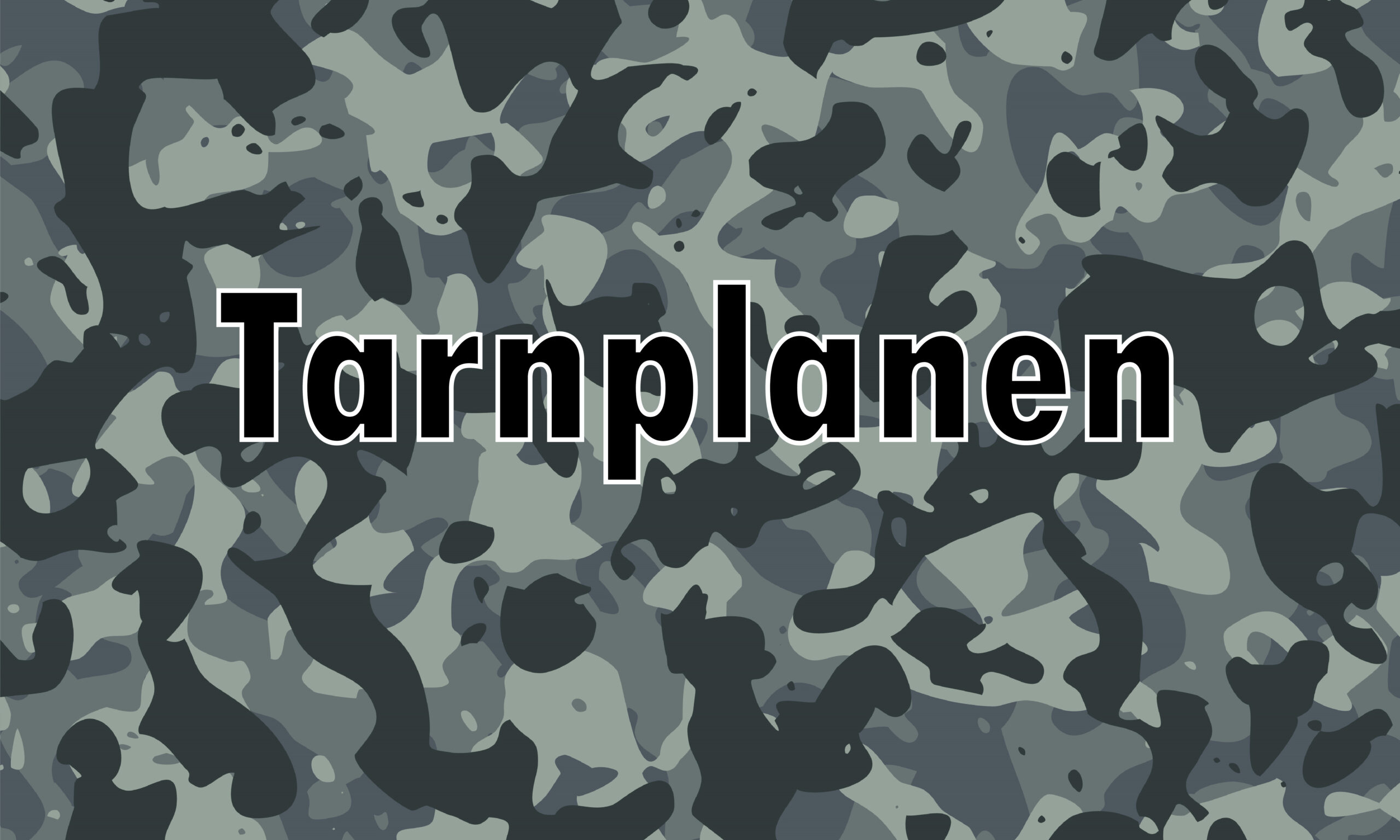News
Uncover the Mystery: The Ultimate Guide to Tarnplanen

- Share
- Tweet /home/u433845138/domains/newsmm.co.uk/public_html/wp-content/plugins/mvp-social-buttons/mvp-social-buttons.php on line 71
https://newsmm.co.uk/wp-content/uploads/2025/06/9105947_26138-01-1000x600.jpg&description=Uncover the Mystery: The Ultimate Guide to Tarnplanen', 'pinterestShare', 'width=750,height=350'); return false;" title="Pin This Post">
Have you ever wondered about those versatile, camouflaged covers you see everywhere, from military encampments to backyard adventures? Chances are, you’ve encountered a “Tarnplanen.” This fascinating German term, translating to “camouflage tarpaulin” or “covering sheet for hiding something,” refers to a durable, weather-resistant cover specifically designed to blend seamlessly into its environment. More than just a simple tarp, a Tarnplanen is a strategic tool offering concealment and protection across a surprising array of applications.
The Enduring Legacy: A Brief History of Tarnplanen
While the concept of concealment is as old as nature itself, the modern tarpaulin, and by extension, the Tarnplanen, has a rich history tied to human ingenuity and evolving needs. The word “tarpaulin” itself has maritime roots, originating from “tar” and “palling” (a heavy cloth). Sailors in the 17th and 18th centuries used tar-coated canvas to protect ship cargo from harsh sea conditions. This early form laid the groundwork for durable, weather-resistant covers.
The true evolution of camouflage tarpaulins gained significant momentum with the advent of aerial reconnaissance and warfare. During World War I, and even more so in World War II, the need to hide equipment, vehicles, and personnel from enemy observation became paramount. Simple fabric covers evolved into sophisticated, multi-layered tarpaulins with advanced camouflage patterns, designed to deceive from afar. These were vital for concealing everything from tanks and artillery to entire airfields, playing a crucial role in military strategy.
From these tactical origins, Tarnplanen began to transcend their purely military function. As materials and manufacturing techniques improved, they became lighter, more durable, and more accessible, finding their way into a myriad of civilian uses. Today, they symbolize utility, preparedness, and a connection to the great outdoors.
Built to Blend and Endure: Materials and Features
What makes a Tarnplanen so effective? It’s a combination of thoughtfully chosen materials and essential design features that work together to provide optimal performance.
Material Composition and Durability: The Backbone of Tarnplanen

At its core, a Tarnplanen is built for resilience. Generally, these tarps are crafted from synthetic polymers known for their exceptional strength and resistance to the elements:
- Polyethylene (PE): This is a very common material due to its excellent balance of durability, water resistance, and cost-effectiveness. PE Tarnplanen are often lightweight, making them easy to transport for temporary shelters or equipment covers.
- Polyester with PVC Coating: This combination offers superior tensile strength and long-lasting performance. The PVC coating provides robust waterproofing and chemical resistance, making these tarps suitable for more demanding applications, including professional and military use.
- Nylon: While lightweight and durable, pure nylon may be more susceptible to tearing and UV degradation compared to coated options. However, ripstop nylon, with its interwoven reinforcement pattern, significantly enhances tear resistance.
- Canvas: While less common for modern camouflage tarpaulins due to its weight and lack of inherent waterproofing, some heavy-duty or traditional-style Tarnplanen might incorporate canvas for its breathability and rugged feel. However, it typically requires additional treatments for water and mold resistance.
Many high-quality Tarnplanen feature a ripstop pattern, which is a special weaving technique that prevents small tears from spreading, significantly extending the life of the tarp. Furthermore, crucial durability features include UV resistance (to prevent degradation from sunlight), mold growth resistance, and chemical corrosion resistance, ensuring they maintain their integrity even in extreme weather conditions like torrential rain or scorching sun.
Key Features for Effectiveness: More Than Just a Pretty Pattern
Beyond the raw materials, several key features contribute to the Tarnplanen’s versatility and effectiveness:

- Camouflage Patterns: This is arguably the most defining characteristic. From classic woodland greens and browns to arid desert tans, snowy whites, and even urban digital patterns, the camouflage is designed to break up outlines and blend with specific environments. Modern military versions often incorporate multispectral camouflage, which aims to minimize detection not only by visible light but also by infrared and radar systems. Some even feature noise-dampening coatings for stealth operations.
- Weather Resistance: A good Tarnplanen is inherently waterproof, windproof, and UV-resistant. This makes it an indispensable tool for protection against rain, harsh sun, and strong winds.
- Tear Resistance: Reinforced corners and edges, often equipped with metal eyelets (grommets), are standard. These reinforcements prevent tearing when the tarp is tied down tightly or subjected to stress, ensuring secure deployment.
- Portability: Many Tarnplanen are designed to be lightweight and compact when folded, making them easy to carry for outdoor enthusiasts, hikers, and soldiers alike.
- Multi-functionality: This is where the Tarnplanen truly shines. A single sheet can transform into a ground cover, a rain shelter, a windbreak, an equipment cover, or even a makeshift stretcher in emergency situations.
When comparing Tarnplanen to generic tarps, the emphasis on concealment, mobility, and multi-environment adaptability truly sets them apart.
Beyond the Battlefield: Diverse Applications of Tarnplanen
While their origins are military, Tarnplanen have found extensive and invaluable applications in a wide range of sectors.
Military and Tactical Applications: Concealment is Key
In military operations, Tarnplanen remain an integral part of tactical gear. Their primary role is to obscure military equipment, vehicles, and personnel from enemy surveillance, whether visual, infrared, or even radar. Soldiers routinely use Tarnplanen to:
- Construct makeshift shelters and temporary bivouacs.
- Cover and conceal vehicles, weaponry, and supplies.
- Hide movement and establish clandestine campsites.
- Create field hospitals or temporary command posts.
- Disguise defensive positions and observation posts.
Modern military advancements have led to Tarnplanen with advanced features like multispectral camouflage and noise-dampening properties, further enhancing their tactical utility in complex operational environments.
Outdoor and Recreational Use: Embracing Nature Discreetly
For outdoor enthusiasts, hunters, and survivalists, the Tarnplanen is an indispensable piece of equipment:
- Camping and Hiking: It serves as an excellent rain shelter, a ground footprint for tents, or a sunshade, offering protection and comfort in the wilderness.
- Hunting and Wildlife Observation: Hunters use Tarnplanen to create blinds and conceal themselves and their gear, allowing them to blend into the natural habitat for better observation and successful outings.
- Survival and Bushcraft: In survival scenarios, a Tarnplanen can be a lifeline for building emergency shelters, collecting rainwater, or even signaling for help (if brightly colored).
- Airsoft and Paintball: These recreational tactical sports benefit immensely from Tarnplanen, which are used to create temporary bases, hideouts, and ambush points, adding a layer of realism and strategic depth to gameplay.
Emergency and Disaster Relief: A Lifesaving Cover
In times of crisis, Tarnplanen provide immediate and essential support:
- Emergency responders and NGOs deploy them in disaster zones to set up temporary shelters for displaced individuals.
- They protect medical equipment and supplies from the elements.
- They shield victims from harsh weather, offering a crucial layer of protection and privacy. Their fast deployment and durable protection make them invaluable assets in critical situations.
Agricultural and Commercial Applications: Protection and Practicality
Tarnplanen are also widely utilized in various commercial and agricultural settings:
- Agriculture: Farmers use them to cover hay, equipment, or protect crops from harsh weather. They can also be used to line irrigation canals.
- Construction: On construction sites, Tarnplanen are employed to protect materials from moisture and dust or to wrap scaffolding to contain debris.
- General Protection: Homeowners find them useful for shielding roofs during repairs, covering firewood piles, or protecting garden machinery from the elements. They can even serve as quick shades or to cover unsightly areas in a garden.
Choosing Your Tarnplanen: What to Consider
With a variety of Tarnplanen available, choosing the right one depends on your specific needs:
- Size: Consider the intended use. Small sizes (e.g., 3x3m) are great for solo hikers or minimalist shelters, while larger ones (e.g., 5x5m or 6x6m) are ideal for family camping, communal areas, or covering vehicles.
- Material and Weight: For backpacking, prioritize lightweight options like ripstop nylon or lighter PE. For heavy-duty, long-term use, polyester with PVC coating or thicker PE provides greater durability.
- Waterproof Rating (PU Coating): If you anticipate heavy rain, look for a tarp with a waterproof rating of 2000mm or higher.
- UV Protection: If the tarp will be exposed to prolonged sunlight, ensure it has UV stabilizers to prevent degradation.
- Camouflage Pattern: Choose a pattern that best matches the environment you’ll be using it in for optimal concealment.
- Grommets/Tie-down Points: Ensure there are sufficient and reinforced grommets for secure attachment.
The Future of Concealment: Innovations in Tarnplanen
The evolution of Tarnplanen continues. As technology advances, we might see:
- Smarter Materials: Tarps embedded with sensors to monitor environmental conditions like temperature or humidity.
- Enhanced Multispectral Capabilities: Further advancements in materials that can fool even more sophisticated detection systems.
- More Sustainable Options: An increasing focus on recycled and eco-friendly materials in their manufacturing process.
In conclusion, a Tarnplanen is far more than just a piece of fabric. It’s a testament to adaptable design, offering critical concealment and robust protection across an incredible spectrum of situations. Whether you’re a soldier on a mission, an avid camper seeking shelter, a hunter blending into the landscape, or simply a homeowner needing reliable cover, investing in a high-quality Tarnplanen is a smart move that promises unmatched versatility, durability, and peace of mind.
10 Frequently Asked Questions About Tarnplanen
- What does “Tarnplanen” mean? “Tarnplanen” is a German term that translates to “camouflage tarpaulin” or “covering sheet for hiding something.” It refers to a durable, camouflaged cover used for concealment and protection.
- Is Tarnplanen only for military use? No, while it originated in military applications, Tarnplanen are widely used in civilian contexts, including camping, hiking, hunting, survival, emergency relief, agriculture, and general outdoor protection.
- What materials are Tarnplanen typically made from? Common materials include polyethylene (PE), polyester with PVC coating, and sometimes nylon or treated canvas. They are chosen for their durability, water resistance, and tear resistance.
- Are all Tarnplanen waterproof? Most high-quality Tarnplanen are designed to be waterproof, but it’s always advisable to check the product specifications for its waterproof rating (e.g., PU coating of 2000mm) before purchasing.
- How is Tarnplanen different from a regular tarp? The key difference lies in its primary purpose and features. Tarnplanen are specifically designed with camouflage patterns for concealment and often incorporate advanced features like UV resistance, reinforced edges, and sometimes multispectral properties, prioritizing tactical effectiveness and blending into specific environments more than a generic tarp.
- Can I use a Tarnplanen as a tent? Yes, a Tarnplanen can be used to construct a makeshift shelter or a simple tent, especially in camping, hiking, or survival situations. Its versatility allows for various pitching configurations.
- What kind of camouflage patterns are available? Tarnplanen come in various patterns, including woodland, desert, snow camo, urban digital, and even advanced multispectral camouflage designed to minimize detection across different light spectra.
- How do I choose the right size Tarnplanen? Consider your intended use. Smaller sizes (e.g., 3x3m) are good for individual shelters or minimal gear cover, while larger sizes (e.g., 5x5m or 6x6m) are better for group camping, communal areas, or covering larger equipment.
- Are Tarnplanen resistant to UV rays? High-quality Tarnplanen often include UV stabilizers in their material composition to prevent degradation and fading from prolonged exposure to sunlight. Always check for this feature if you plan to use it in sunny conditions.
- How should I care for and store my Tarnplanen? To ensure longevity, always clean your Tarnplanen thoroughly and ensure it is completely dry before folding and storing it. This prevents mold and mildew growth. Store it in a cool, dry place away from direct sunlight and extreme temperatures.
Click for more amazing info. News MM

-

 Celebrity8 months ago
Celebrity8 months agoIndia Rose Brittenham: All You Need to Know About Heather Thomas’ Daughter
-

 Celebrity8 months ago
Celebrity8 months agoMargot Rooker: All You Need to Know About Michael Rooker’s Wife
-

 Celebrity8 months ago
Celebrity8 months agoNadia Farmiga? All You Need to Know About Taissa Farmiga’s Sister
-

 Celebrity8 months ago
Celebrity8 months agoRobert Noah? All You Need to Know About Trevor Noah’s Father
-

 Celebrity7 months ago
Celebrity7 months agoJackie Witte? All You Need to Know About Paul Newman’s First Wife
-

 Celebrity8 months ago
Celebrity8 months agoCheryl Pistono? All You Need to Know About Kareem Abdul-Jabbar’s Ex-Girlfriend
-

 Celebrity8 months ago
Celebrity8 months agoAbigail S. Koppel? All You Need to Know About Leslie Wexner’s Wife
-

 Celebrity7 months ago
Celebrity7 months agoWho is the Father of Jay-Z? Biography of Adnis Reeves












